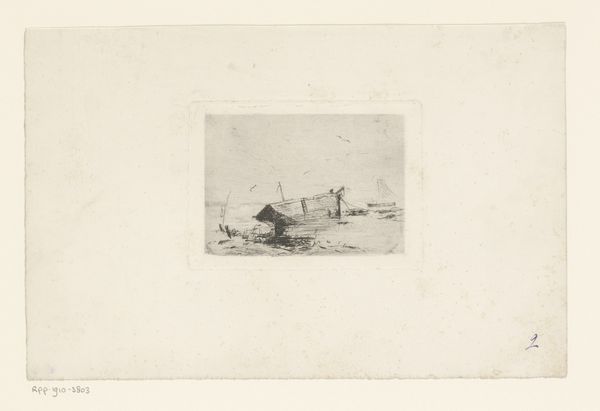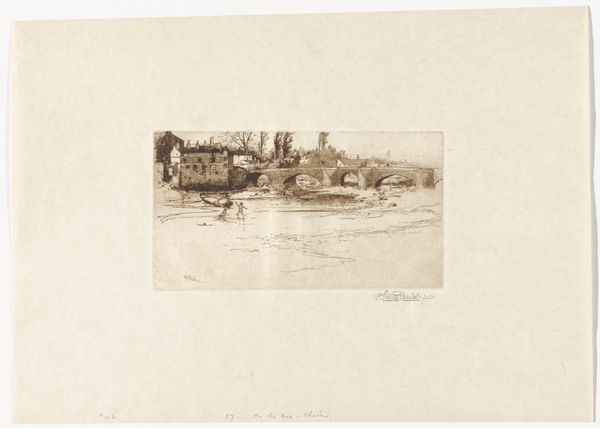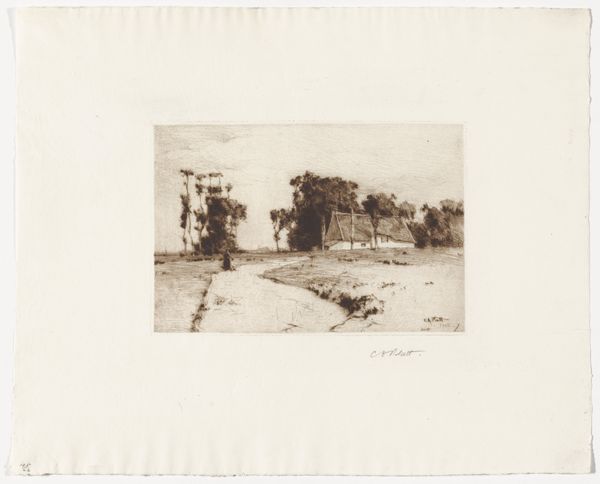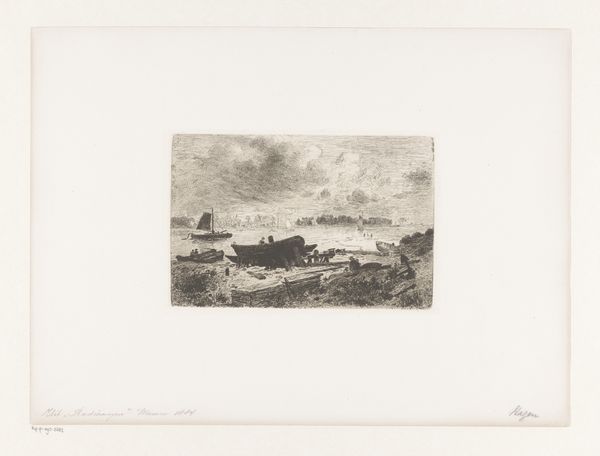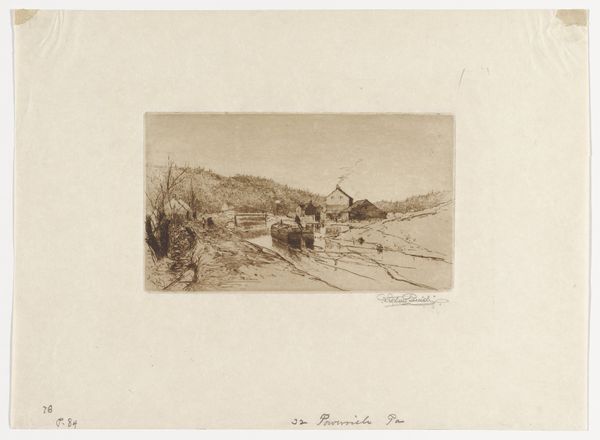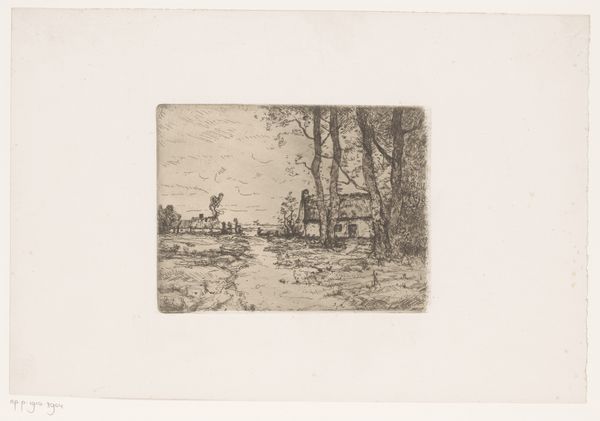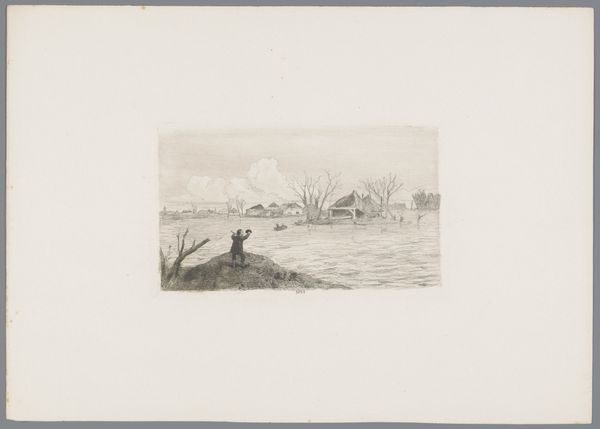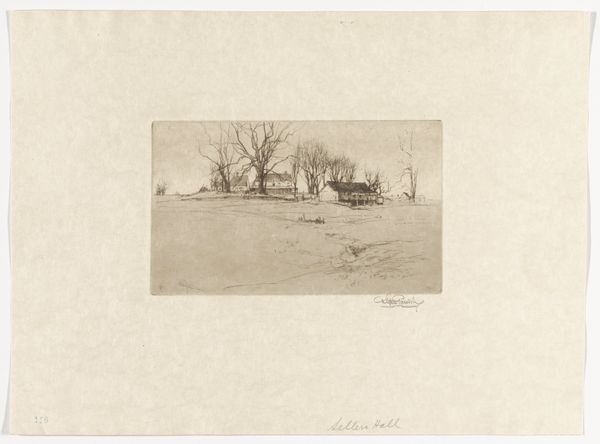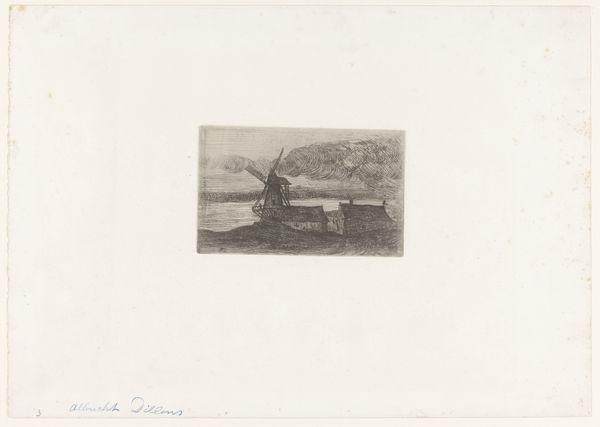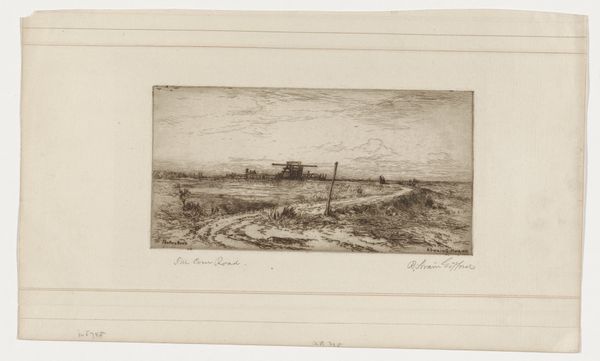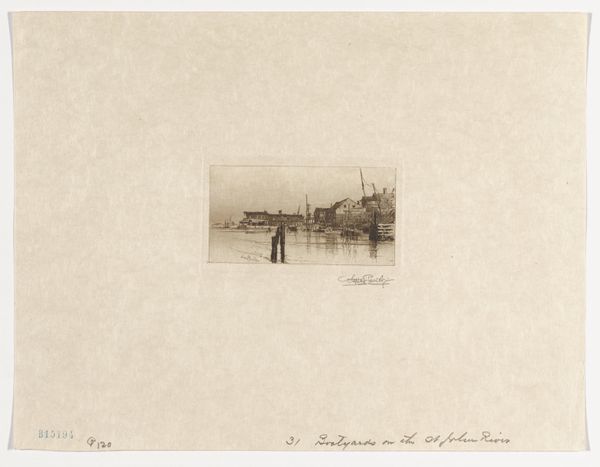
drawing, print, etching
#
drawing
# print
#
etching
#
landscape
Dimensions: 4 15/16 x 7 7/8 in. (12.54 x 20 cm) (plate)12 1/8 x 17 3/8 in. (30.8 x 44.13 cm) (sheet)
Copyright: Public Domain
Curator: This print, titled "Paluel," comes to us from the late 19th century and is the work of Stephen Parrish. The Minneapolis Institute of Art holds this example of Parrish’s talent in etching. Editor: My immediate impression is of quiet melancholy. The monochromatic tones lend a subdued air to the village scene. There is a single figure, slightly bent as though working. What visual echoes can you unravel for us here? Curator: Parrish, like many artists of his time, was drawn to the picturesque charm of rural Europe. “Paluel” depicts a northern French village, likely along the coast. It is significant, perhaps, because the village seems unchanged by the sweeping forces of industrialization. These scenes spoke to a nostalgia, to an imagined, simpler past. Editor: That nostalgia translates visually, certainly. The steeple dominates the village buildings. The spire traditionally represents a community aspiring towards transcendence or order—reaching to heaven, but the somewhat hunched, laborious figure in the field suggests perhaps a contrast between the aspirations of religion and the reality of daily toil? Curator: Interesting perspective. Indeed, the contrast could speak to deeper social tensions—the Church’s traditional power juxtaposed with the struggles of common laborers. Artists of the late 19th century often engaged with depicting these contrasts to subtly critique power structures. It is interesting, too, how printmaking served as an affordable medium making this critique accessible to a wider audience. Editor: Printmaking is potent here. I see this image as an exercise in duality. Light and shadow play significantly to create depth but also this sense of tension. This push-and-pull visually reflects Parrish's statement about progress. The visual symbolism, particularly that looming steeple, does echo with an earlier social order beginning to give way to something less...certain. Curator: An incisive reading of how these simple symbols worked during a time of rapid change. These scenes allowed people to contemplate what progress really looked like when weighted against tradition. Editor: A fruitful insight, wouldn't you say? A moment of respite captured on copper plate and ink.
Comments
No comments
Be the first to comment and join the conversation on the ultimate creative platform.
